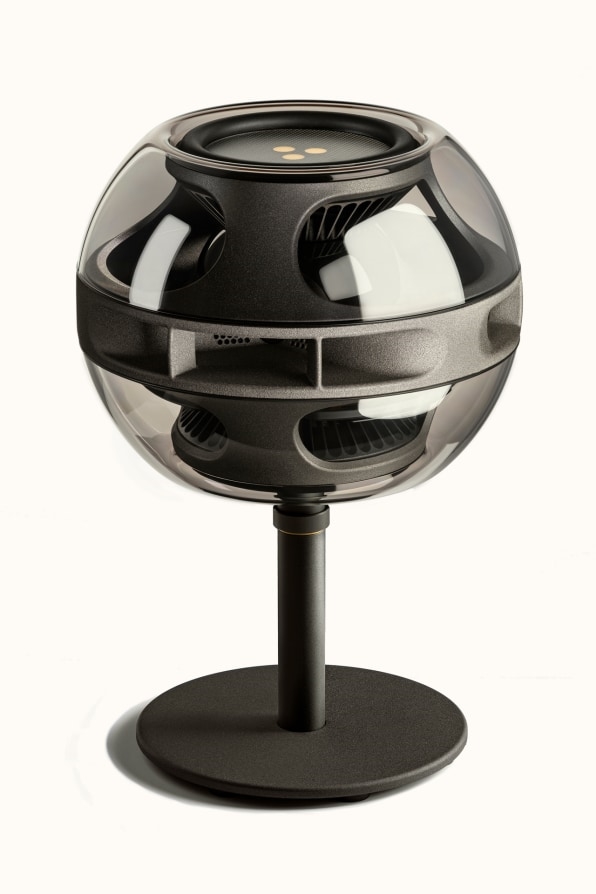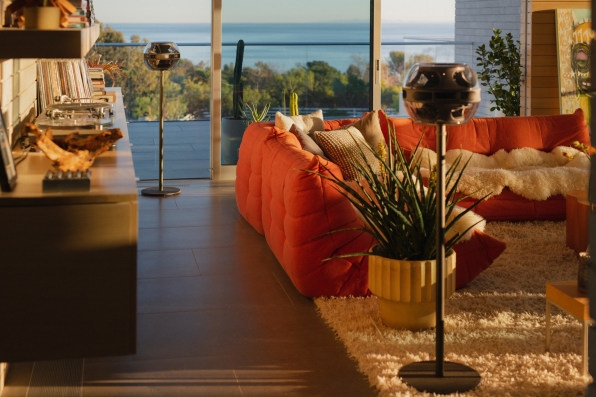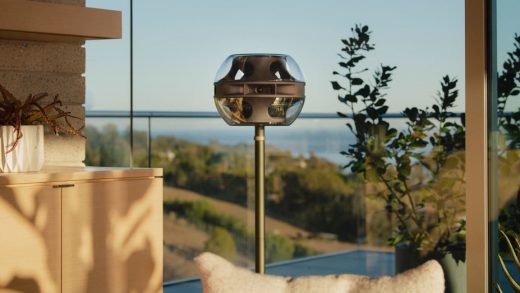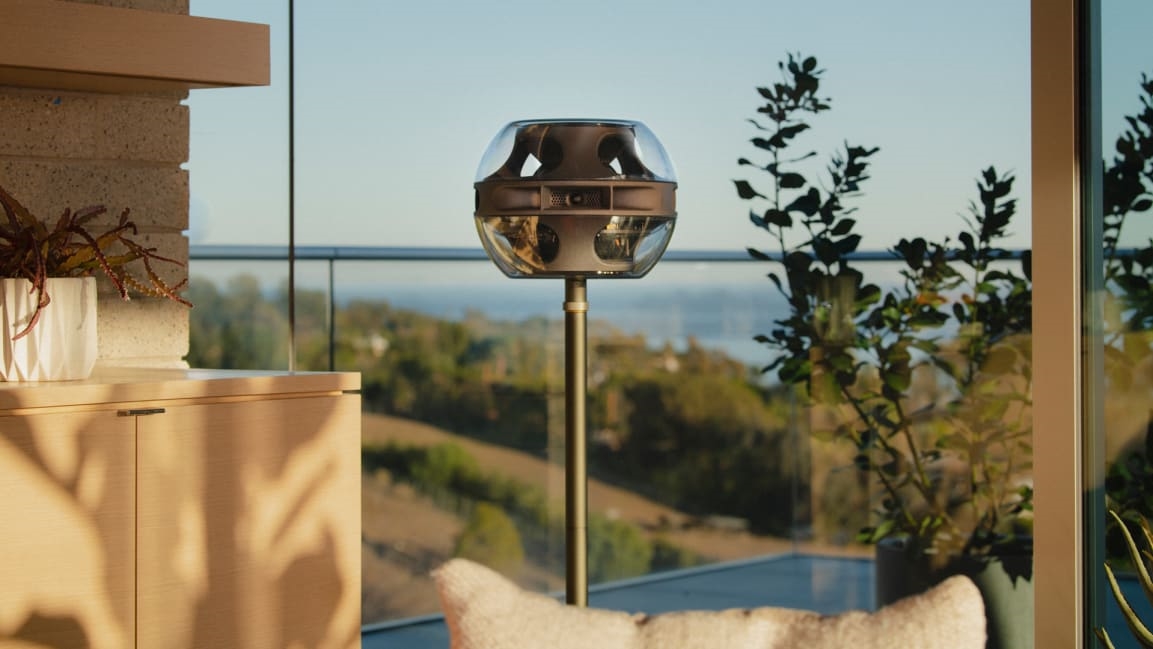A 20-year Apple veteran just unveiled a wild new kind of speaker
From the still-iconic iPod to the human curation of Apple Music to the meticulous design of the digital instruments in Logic X, it’s pretty clear that music is deep in Apple’s DNA. That’s why it’s worth paying attention when a 20-year veteran of the company’s industrial design group goes off to start his own audio hardware company.

Christopher Stringer helped design the iPhone, iPad, MacBook, Apple Watch, and other Apple hits. Now he’s the cofounder and CEO of Syng, which is unveiling its first product, a large round speaker called Cell Alpha that sits on a stand on your living room floor or a tabletop.
The round enclosure contains woofers on the top and bottom and a trio of mid-range drivers in the middle. The design has a retro-future vibe, as if someone set out in 1970 to envision the sound system of 2050.
Stringer believes audio hardware has fallen way behind advances in sound design coming from the entertainment industry today. Audio modes are still basically confined to mono, stereo, or surround sound. “It’s not obvious how limiting that is,” he says. He’s interested in providing a new standard that better accommodates the user’s ears and surroundings–to set “the definition of spatial sound for future media,” as he puts it.

The secret sauce of the Cell Alpha may be the software that tailor-fits the output of the speakers to the room and the people in it. Three microphones on the stand measure the geometry of the room, and listen to the way sound is moving and bouncing off objects or walls in the room. That information is used to tune the output of the speakers.
This room-mapping technology sounds somewhat similar to the audio processing technology used in Apple’s HomePod speaker. (Stringer worked on the HomePod while at Apple.) Syng spent three years refining the way its speakers distribute sound.
Stringer says you don’t need two Cells to produce stereo sound. Just one will fill a room with “gorgeous” sound that’s so good “it’s tactile,” he says. However, a team of Cells can connect to each other via Wi-Fi, and then work together to create a harmonious soundscape within a room. Or they can be placed in various rooms around the house.
That’s if you’re prepared to drop six or eight grand on a new speaker system. The model with the floor stand costs $1,969. With a table stand, the speaker is $1,799. They go on sale at the Syng website today.
(20)



